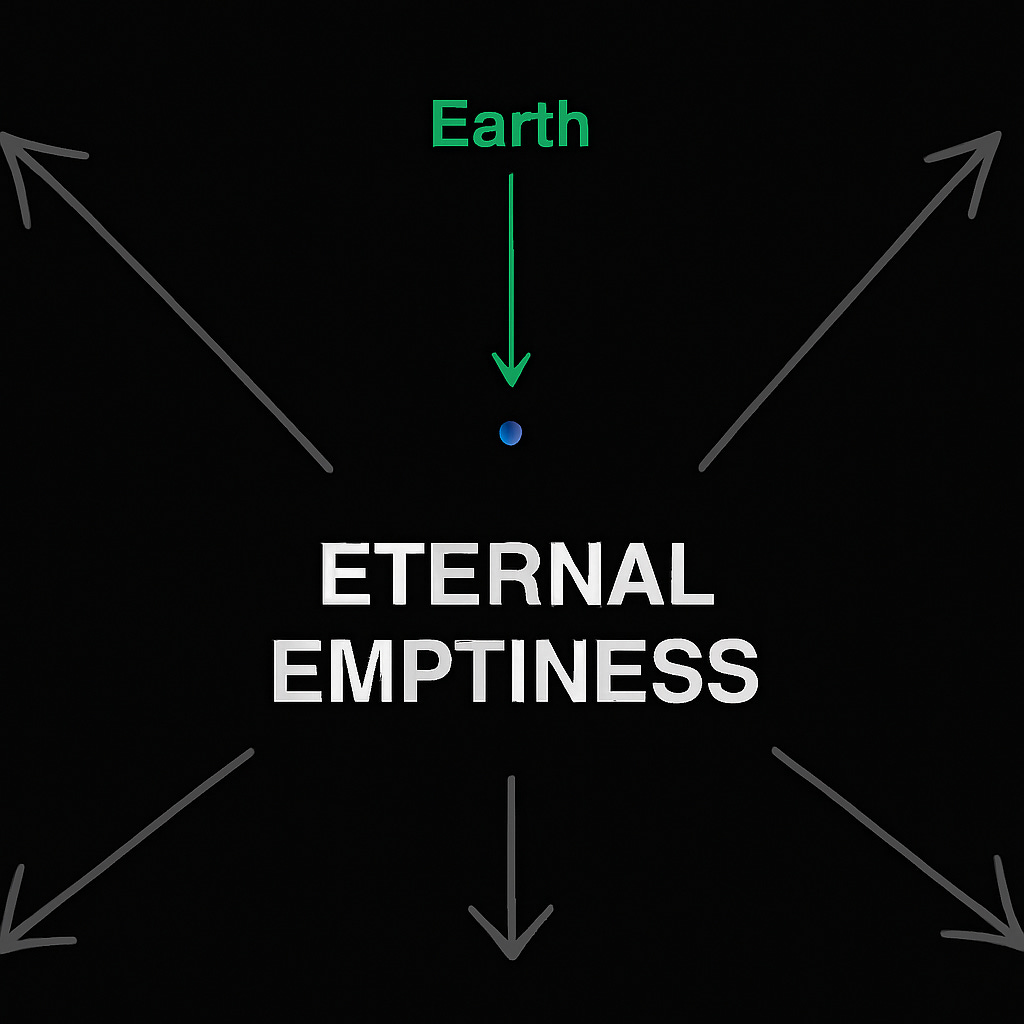The Cosmic Joke: How Tiny We Really Are (and Why That’s Wonderful)
READING TIME: 2 MINUTES
Seeing Just a Sliver of Reality
Our vision detects only a sliver of the electromagnetic spectrum — less than 0.01% of all the light that surrounds us. That means that with our own eyes, we’re not seeing the world as it truly is, but only a faint whisper — no more than 0.01% of reality itself. It’s like reviewing a banquet after tasting a single crumb.

Infrared, ultraviolet, X-rays, gamma rays — the universe hums with frequencies we cannot sense, vast symphonies of energy and light forever hidden from us. And yet, from that narrow band of visible light, we’ve painted art, mapped the stars, and built entire civilizations.
Light That Took Millions of Years to Arrive
The light from the stars we admire may have died millions of years ago, but only now has their glow reached us because light takes time to travel — even at 300,000 kilometers per second.

It’s cosmic déjà vu — as if we’re applauding fireworks long after the sparks have died.
The Longest Walk You’ll Never Take
There are more stars in the sky than grains of sand on Earth. And if Earth itself were a grain of sand, the nearest star would be four light-years away — about 40 trillion kilometers. Yes, you heard that right: 40,000,000,000,000 km! If you were walking, that’s roughly forever and a half.
You’d need a very patient camel to cross that desert.
When the Earth Was Just Rock and Restless Sea
And once upon a time — which, in cosmic terms, means thousands of millions of years ago — the universe was busy being itself in a way that didn’t involve us. Simple words, yes — but pause and let them sink in. Do you know how long a second is? About the time it takes to count “one.” Now multiply that by a thousand million “ones.” That’s almost 33 years — long enough for you to finally figure out how to dance, only to realize nobody does that dance anymore.
A Planet Without Green
Now try to imagine a thousand million years. At that time, there were no giraffes, no philosophers, not even people to invent giraffes and philosophers. Just creatures like snails and worms who, frankly, weren’t much good at parties. Or philosophy. And before that, there weren’t even plants. Nothing to grow, nothing to reach toward the sun, nothing to mark the passing of seasons. Nothing green at all — only bare rock and restless sea.
And the sea was empty too — no fish, no shells, no seaweed. Just a vast liquid nothingness sloshing about.
The Cloud That Became Home
But if you’d listened to the waves (and you had an awful lot of time to listen), they might have whispered: “Everything you see was once nothing at all.” For once the Earth itself was nothing more than a swirling cloud of gas and dust, like the ones our telescopes now peer at while astronomers make noises of polite astonishment. For billions and trillions of years, there were no rocks, no water, no life. Just that cloud whirling aimlessly around the Sun.
The Last-Minute Arrival
And then we showed up — late to the party. In Earth’s 4.5-billion-year history, scaled to a single 24-hour clock, humans stumble in during the last six seconds before midnight. Recorded history is only about 5,000 years old —just a blink, the last 0.1 second on Earth’s clock.
And yet — here we are. Microscopic beings on a microscopic patch of rock. Complaining that our Wi-Fi is slow.

The Miracle of Being Here
The truth is, our existence is improbable, miraculous, absurd… which is precisely why it’s wonderful. Perhaps that’s the great cosmic joke: that with almost nothing, we imagine everything. Our limitations don’t just confine us — they shape us. They force us to wonder, to invent, to seek what lies beyond the veil.
And maybe that’s enough. Because to be human is not to see the whole of reality, but to be astonished that reality exists at all.
Don’t sweat the small stuff. Be grateful. Be present. Smile.
And if your coffee isn’t hot enough, remember: at least it’s not forty trillion kilometers away.
Forty trillion kilometers of space, and still not enough foam on the latte.
















